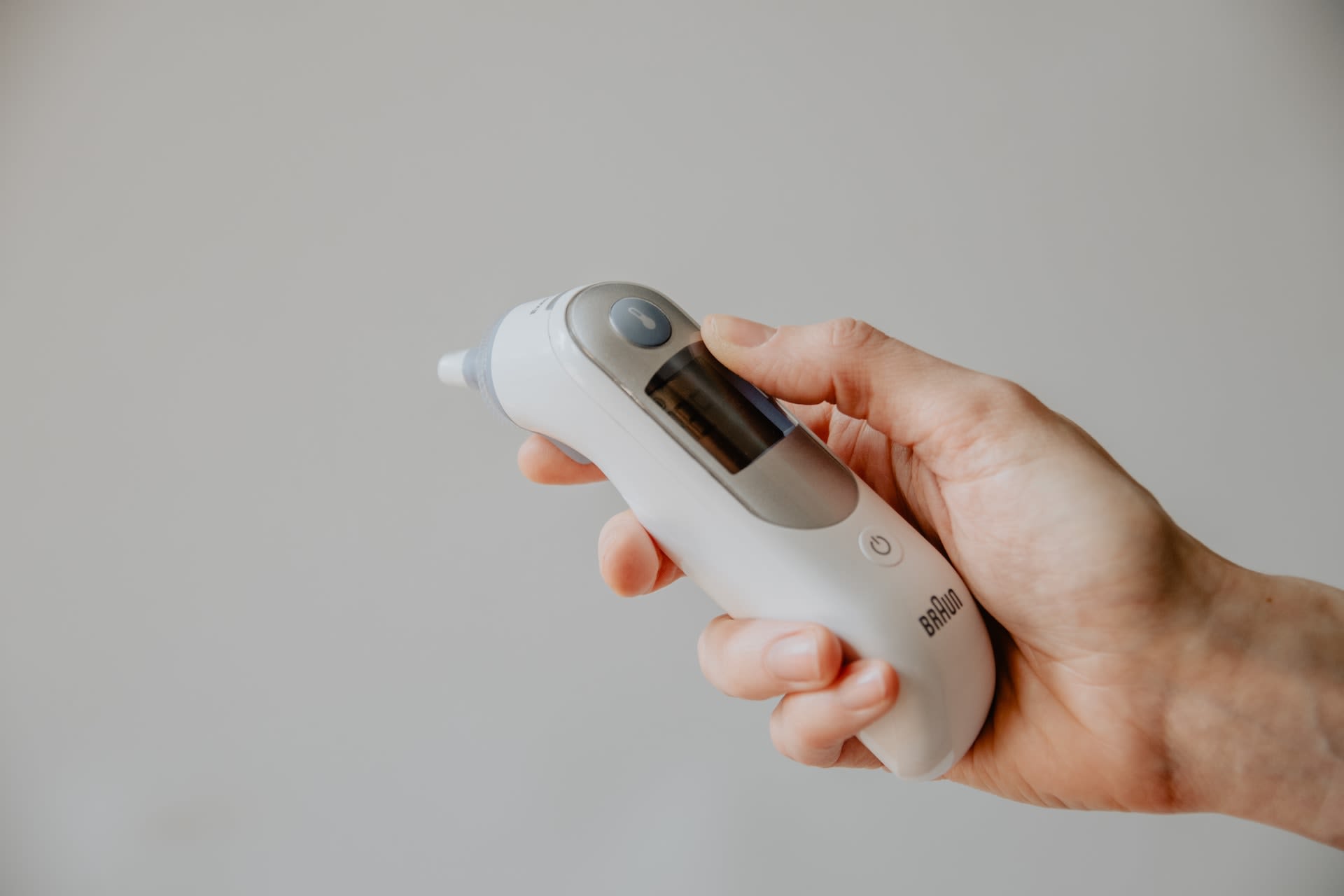Thermometers, a seemingly simple tool, are found everywhere from our homes to medical offices, and play a critical role in numerous fields — health, food safety, meteorology, and more.
In this article, we'll learn how different thermometers work and some mistakes to avoid when using them.

How Does a Thermometer Work?
Bi-metallic strip, liquid-in-glass, digital, and infrared; represent just a few of the many types of thermometers used today.
The basic principle all thermometers capitalize upon is called thermal expansion. Basically, when substances heat up, they tend to expand, and the degree of their expansion can be meticulously calibrated to display a specific temperature reading.
Traditional Thermometers
Traditional thermometers, like mercury or alcohol thermometers, look like sealed glass tubes with a liquid inside and numbers marked on the side to display the temperatures.
They utilize a small, confined amount of liquid that expands as it gets warmer and moves up a thin tube. The point where the mercury stops indicates the temperature.
Note: Mercury is a toxic substance that can harm both humans and wildlife. When the mercury thermometer breaks, the mercury can evaporate, creating a risk of dangerous exposure to mercury vapor in indoor air.
The alcohol thermometer is an alternative to the mercury thermometer.
Digital Thermometers
Digital thermometers, commonly used in homes and hospitals, work slightly differently.
They use a semiconductor type of resister called thermistor, which adjusts its electrical resistance based on temperature changes.
Once the thermistor identifies this change in resistance, the thermometer translates it into a temperature reading.
Digital thermometers are the most accurate way to test someone's temperature to see if they are ill.
The Importance of Accuracy
The thermometer's accuracy is crucial for reliable temperature measurement, as improper readings can lead to misdiagnosis or incorrect treatment. Ensure you buy from reputable brands that meet standard accuracy guidelines.
Furthermore, every thermometer type has its own range of accuracy. For instance, digital thermometers are generally considered accurate within 0.1°C, while ear thermometers may have a variable rate.
The Benefits of Using Digital Thermometers
Due to the safety concerns related to the dangers of using mercury thermometers which is a poisonous substance, it's recommended to use digital thermometers.
Here are some benefits of using the digital thermometers:
Faster speed and better accuracy: The most significant advantages of using a digital thermometer are its speed and accuracy in measuring body temperature. Unlike mercury thermometers which can take several minutes to provide a reading, digital thermometers usually deliver results in a matter of seconds. This is especially crucial when dealing with infants, restless children, or individuals with limited patience. Moreover, digital thermometers are incredibly precise. They can measure temperature down to a tenth of a degree, ensuring that you get an accurate reading every time. This level of accuracy is crucial when monitoring fever, as even a slight variation can be significant in determining the severity of an illness.
Safety: When it comes to medical instruments, safety is essential, and digital thermometers perform their jobs well.
Because mercury thermometers contain a small amount of toxic mercury, it's important to handle them carefully so they don’t break. Digital thermometers have no such risks—they're safer for households with young children.
User-Friendly Design: Digital thermometers are easier to read than traditional mercury versions. They have large displays and clear numbers, which means you can check your temperature without squinting at lines on the glass tube of a regular thermometer. Some digital thermometers include features such as backlighting and color-coded displays, making it even easier to understand their results. Some models store previous readings so that users can track temperature trends over time.
Mistakes to Avoid When Using a Thermometer
While thermometers are generally straightforward, careless mistakes can compromise their efficiency and accuracy:
Improper positioning: The device needs to be placed correctly for precise readings. For ear thermometers, ensure that the device is directed towards the eardrum.
Neglecting cleaning: An unclean thermometer can yield incorrect readings, plus it risks spreading germs. Clean your thermometer according to the manufacturer's instructions after every use.
Ignoring calibration: To maintain their accuracy, thermometers need to be calibrated time and again. Follow the manufacturer's instructions for calibrating your specific model.
Conclusion
A digital thermometer is a handy device to have at home for monitoring your children's body temperature.
Therefore, it is important to understand how a thermometer works and how to use it correctly when you spot signs of fever in your children.



